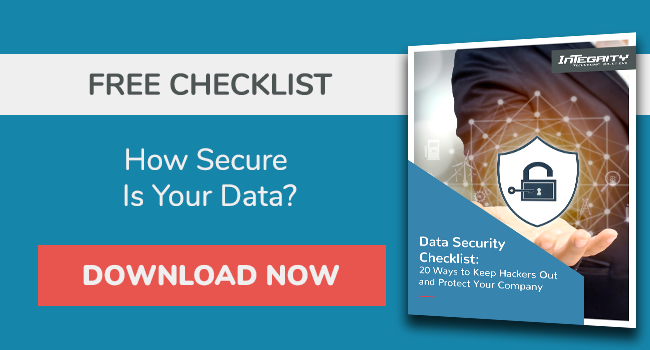The Beginner’s Guide To Managed Detection and Reponse: What You Need To Know

277 days.
That’s about 40 weeks or nine months—the average amount of time it takes for a human baby to develop and be born.
It’s also the average time it takes to identify and contain a data breach, according to IBM.
That’s right: detecting and responding to a cyberthreat could coincide with the entire prenatal development process.
If you’re thinking to yourself, “That’s a long time. There’s got to be a quicker, more efficient way to sniff out cybersecurity vulnerabilities,” you’d be correct.
That’s where managed detection and response, abbreviated as MDR, comes into play.
What Is Managed Detection And Response?
MDR combines security technologies and human resources to drastically reduce the response time for threats detected to curb a security incident.
Organizations use MDR solutions for threat hunting and to analyze potential threats, as well as actively respond to any that are discovered.
The security operations center (SOC) experts receive, investigate, and analyze threat intelligence to deliver actionable recommendations that result.
Why Do You Need MDR?
Organizations should consider the 24/7 benefit of MDR for its ability to minimize how long a cyberthreat could wreak havoc within their systems without needing additional staffing.
Plus, the cost of a data breach is higher than ever.
IBM reports that while the time it takes to identify and contain a data breach contracted from 287 days in 2021 to 277 days in 2022, the global average cost of a data breach hit a record seven-year high of $4.35 million.
Reports and Data has identified three market dynamics expected to fuel the growth of MDR:
- The lack of skilled cybersecurity professionals - Without the skills required by staff members, or the organization’s inability to hire skilled staff, MDR could be an optimal solution for organizations seeking to increase their security posture.
- Strict regulatory environments - Banking and financial services, in particular, are some of the most targeted industries when it comes to cyberthreats such as ransomware, malware, and phishing attacks.
- COVID-19 fallout - The global pandemic shifted many organizations to remote work and has increased cybersecurity risk as a result.
MDR vs. SIEM
One of the most common questions about MDR is how it compares to a SIEM—security information and event management—solution.
SIEM tools use machine learning to aggregate logs from different pieces of hardware and applications into one centralized location, and then analyze those logs for potential cybersecurity threats.
Even though SIEMs can fulfill compliance requirements, interpreting their results can sometimes be a challenge.
In short, while SIEMs retain system logs and alert an organization only to the fact that a threat exists, MDRs go a step further and remediate the vulnerabilities posed by that threat.
Are MDR and EDR The Same?
Endpoint detection and response (EDR) is the evolution of antivirus capabilities.
EDR uses artificial intelligence to detect anomalies and respond to threats without human intervention.
However, EDR only works when it’s supported by human expertise—a sub-par configuration of an EDR solution could leave an organization more vulnerable to attack than if it didn’t have EDR at all.
MDR can help alleviate that concern through human intervention.
By receiving an alert from an EDR, an MDR service could interpret the alert and take appropriate action to begin the incident response.
What Is The Difference Between MDR and SOC?
A complete MDR solution includes a SOC, or a security operations center.
The SOC is the team of people that respond to advanced threats and other security events detected by an EDR or a SIEM solution.
This team also offers recommendations to strengthen an organization’s security posture.
Integrity is a managed security service provider that helps implement endpoint protection and other security tools. Learn more about our security team and what it’s like to work with us here. Plus, find out whether your data is secure by downloading our Data Security Checklist!

